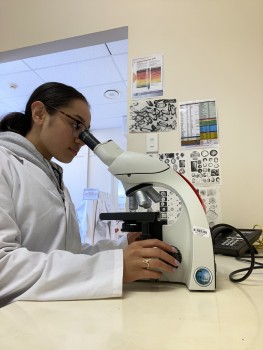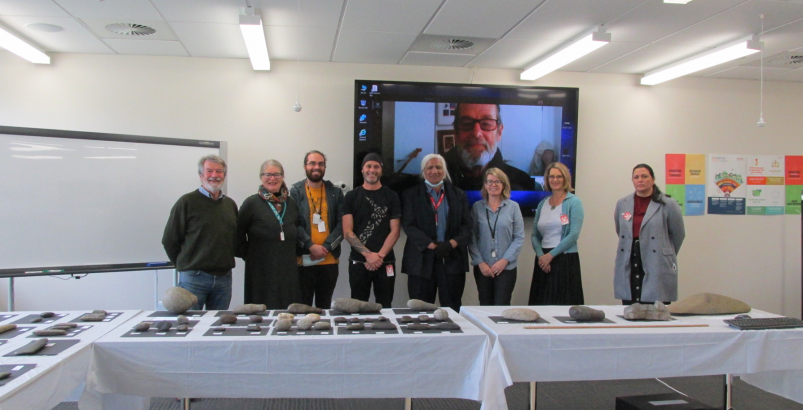Te Ao Pūtaiao Me Te Ao
30 March, 2021

Isitokia Paasi evaluate the geological and geochemical whakapapa and composition of stone artefacts from the Kawhia Museum.
The geological origins and whakapapa of the Kawhia and Aotea region can be expressed in terms of three developmental steps that relate to the histories of Gondwana, Zealandia and Te Riu o Maui.
The oldest ‘basement’ rocks of the Kawhia-Aotea region are of Jurassic age, between 200 and 145 million years old. We know this from the study of the fossils they contain. There are rocks of Jurassic age elsewhere in Aotearoa New Zealand, such as in south Otago and Southland, but they are best revealed to us in the Kawhia-Aotea region. These sedimentary rocks are very special from an international perspective because they accumulated on the very edge of a large Pacific- Ring-of-Fire volcano located in southeastern Gondwana, and more or less on the South Pole. At the time, there were no polar ice caps.
Nevertheless, because of the polar location, the fossils they contain are of huge interest, and not least the Giant Ammonite discovered in the mid-1970s at the western end of Whakapirau Road Taharoa. Local intra-plate volcanism has produced the Pirongia and Karioi basalt volcanoes which erupted between 2.74 and 1.6 million years ago. They dominate the landscape in the Kawhia and Aotea region and produce rich fertile soils of Hawaiiki-iti an inlet of the Aotea harbour with over half a millennia of traditional occupation, going back to the arrival of Tainui and Aotea waka. The area continued to be an important place throughout the history as evidenced in the many archaeological remains of centuries of occupation in the form of pā, storage pits, taro gardens, ovens and midden.
Kawhia museum contains local collections of artefacts from contributing regions on the west coast Aotea-South Kawhia that connects with Māori as individuals and groups, and in terms of special knowledge and cultural values. This research has geochemically fingerprinted these taonga, and will further lead to our understanding of the nature and relationship between taonga artifacts and their source locations. This research will create a digitized inventory of each item which will be showcased on the NZ museums website to improve accessibility of the collections back to interested communities, including iwi, public, researchers and online museum visitors.
DiscoveryCamp alumna Isitokia Paasi joined the project and worked with Stakeholder Partner Iwi Diane Bradshaw from the Ngāti Te Wehi, Ngāti Mahuta hapū of Waikato Tainui, Te Uri o Hau ki Te Rarawa iwi, and Dr Karyne Rogers at GNS Science over the summer as one of our Alumni Summer Students, to support top talent and acknowledge the role of integration of knowledge bases on many levels with regard to ‘Science and Society’.
We explore the knowledge that existed within Māori communities pertaining to traditional uses in a habour setting and also what technical capability and capacity these communities have or require to utilise natural resources as tools. Relating this with the additional recognition
that connects whakapapa, mātauranga Māori and cultural identity. This materials research explores kaitiakitanga, veracity – truthfulness of the data, the place, the people and technology – in collaboration with geochemically connecting geological sites and the significance of these natural treasures within the region.

Kawhia Museum Collections visit to GNS Science led by Kaumatua Rauangaanga


